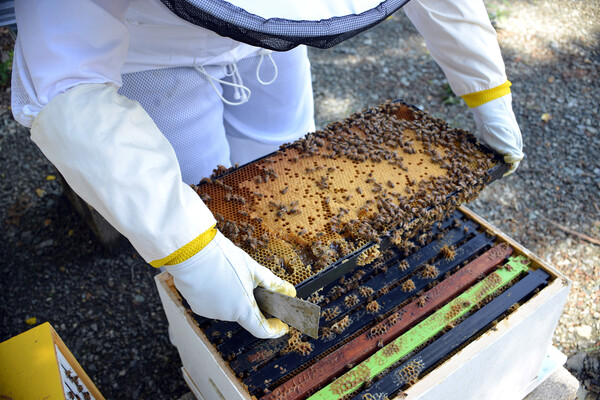
nocred
Fragile X syndrome (FXS) is the most common genetically inherited cause of intellectual disability in humans. New research shows how the hormone insulin – usually associated with diabetes -- is involved in the daily activity patterns and cognitive deficits in the fruitfly model of FXS, according to a new study from the Perelman School of Medicine at the University of Pennsylvania published online this month in Molecular Psychiatry in advance of the print issue. The team’s results reveal a metabolic pathway that can be targeted by new and already approved drugs to treat fragile X patients.
In humans, the disorder is caused by a mutation in the FMR1 gene and is also the most common genetic cause of autism. In fact, 2 to 5 percent of autism cases are attributed to FXS. Understanding how this gene works is vital to finding new treatments to help Fragile X patients and others with intellectual disability and autism.
The Penn scientists study the common fruitfly, Drosophila, whose genome contains a cousin, or homologue, of the human FMR1 gene called dfmr1. The lab of Thomas Jongens, PhD, an associateprofessor of Genetics, along with doctoral student Rachel Monyakand Sean McBride, MD, PhD, a psychiatrist at the Adult Developmental Disorders and Monogenic Disorders Clinic with Penn Behavioral Health, have been working with the fly model to find new therapies to treat the behavioral and cognitive deficits seen people with FXS, and are co-authors on the current paper.
FXS is an undertreated neurodevelopmental disorder characterized by a wide range of symptoms including disordered sleep, but its mechanistic underpinnings are not well understood. About 1 in 5,000 males are born with the disorder.
The team showed that select expression of dfmr1 in the insulin-producing cells (IPCs) of the fly brain was enough to restore normal day/night activity patterns and to rescue memory problems in the fragile X fruitfly. This finding represents a dfmr1 expression in only 14 of over 100,000 neurons in the fly brain. When they looked closer at the insulin-signaling pathway in flies, they saw elevated levels of a molecule called Drosophila insulin-like peptide 2 in the IPCs and elevated insulin signaling throughout the mutant fly brain.
“The expression of dfmr1 specifically in the 14 insulin-producing cells of the fly brain reduced insulin signaling throughout the brain,” Jongens said. “Genetically shutting down the insulin pathway also led to the improvements in day-night activity patterns and memory defects.”
Further study showed that reducing insulin signaling at different, specific time points is required to rescue circadian behavior and memory. Specifically, insulin signaling has to be reduced when the larva is transitioning to an adult in the pupae case to rescue day/night activity patterns, but can be reduced acutely in adults to rescue memory.
Karen Kreeger

nocred

The sun shades on the Vagelos Institute for Energy Science and Technology.
nocred

Image: Kindamorphic via Getty Images

nocred